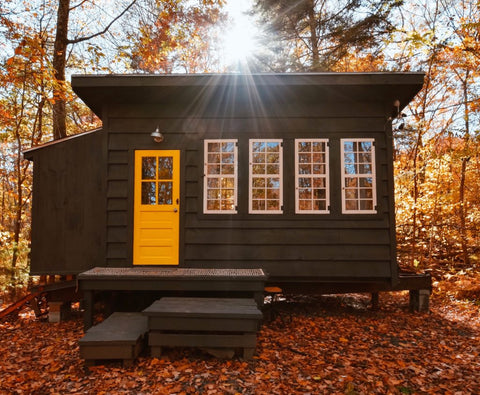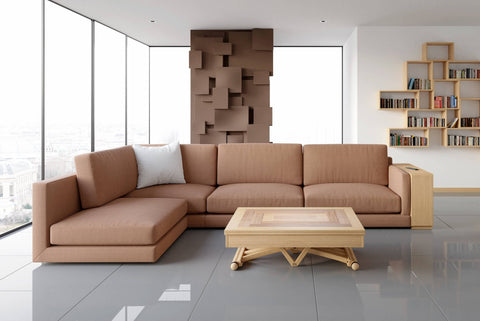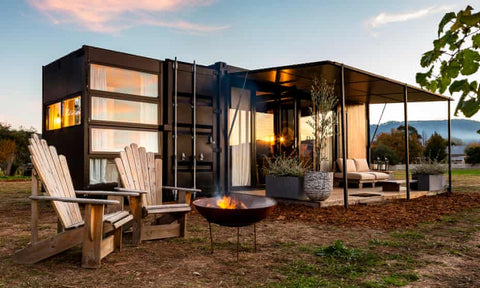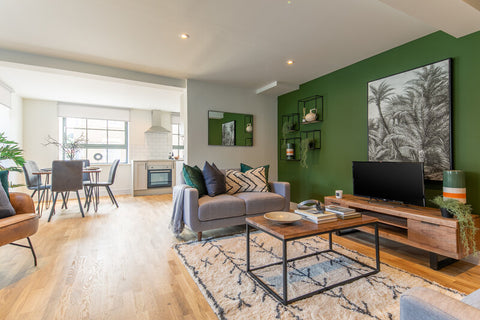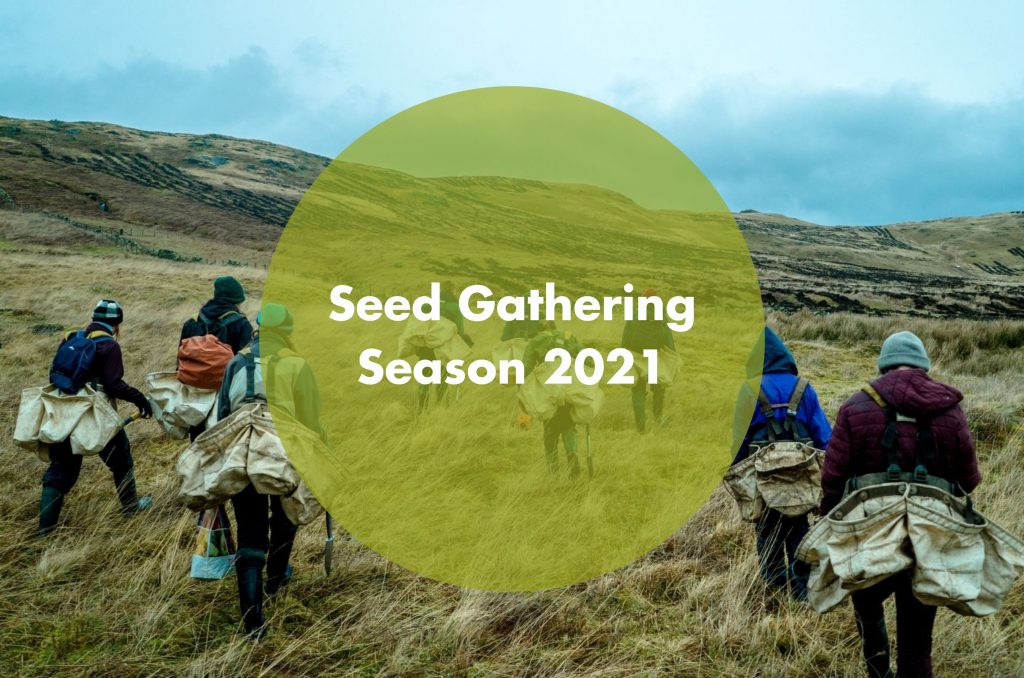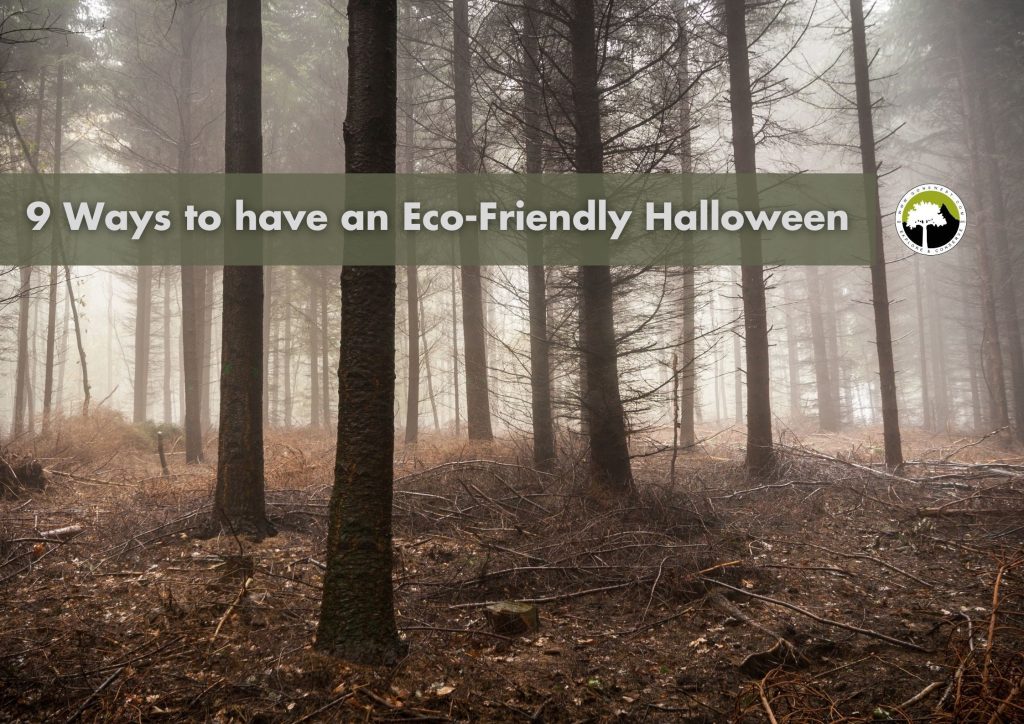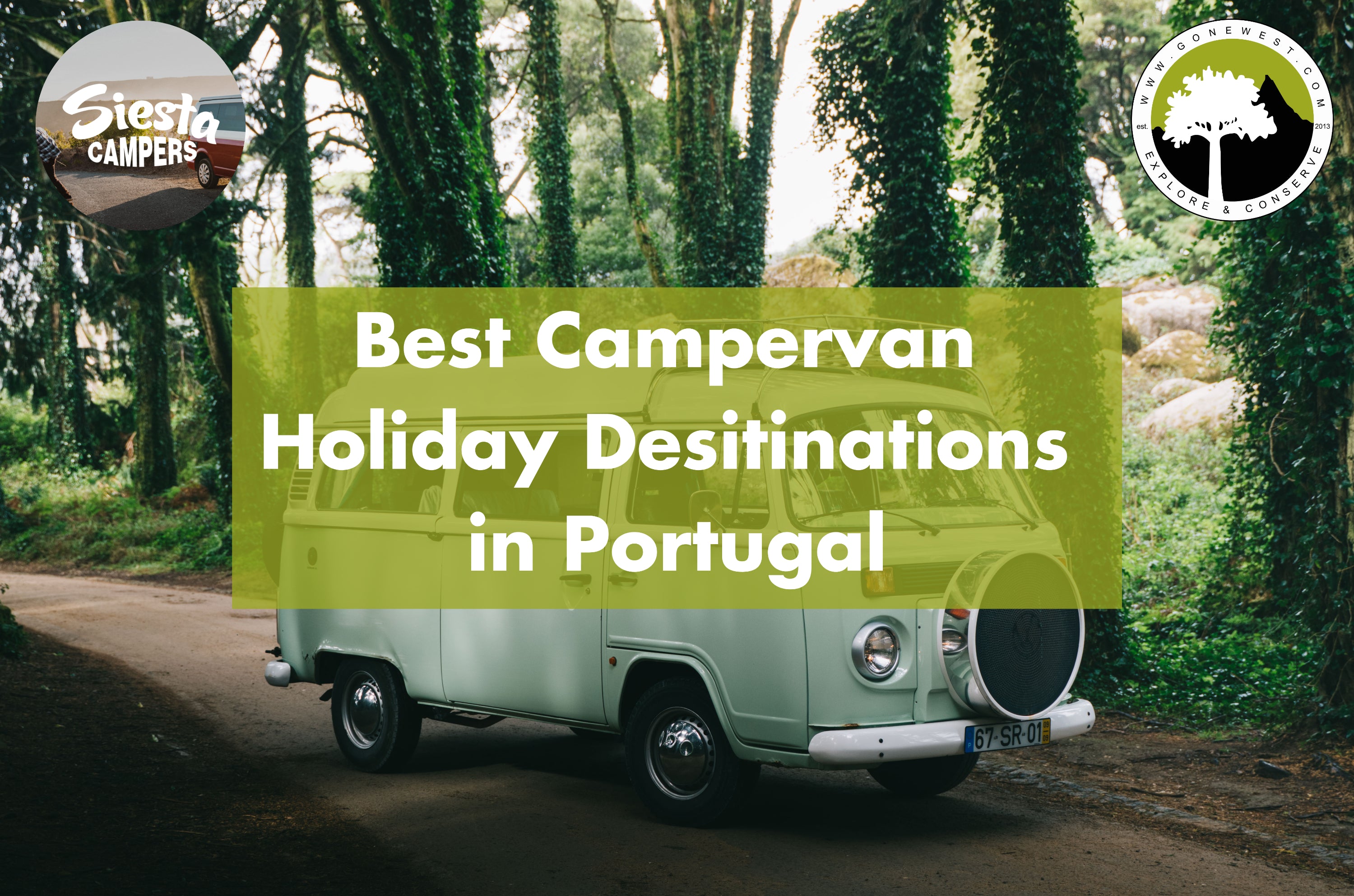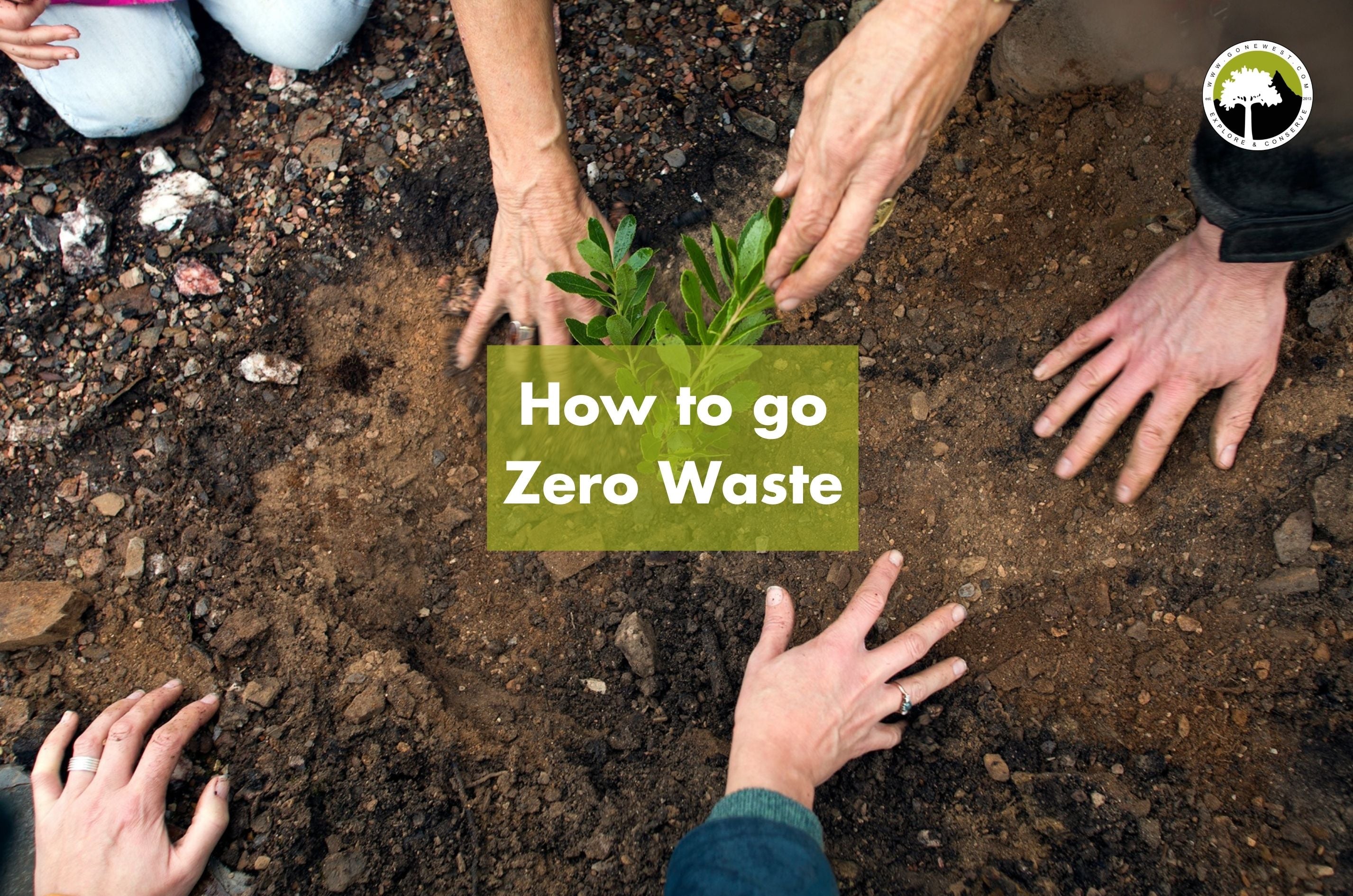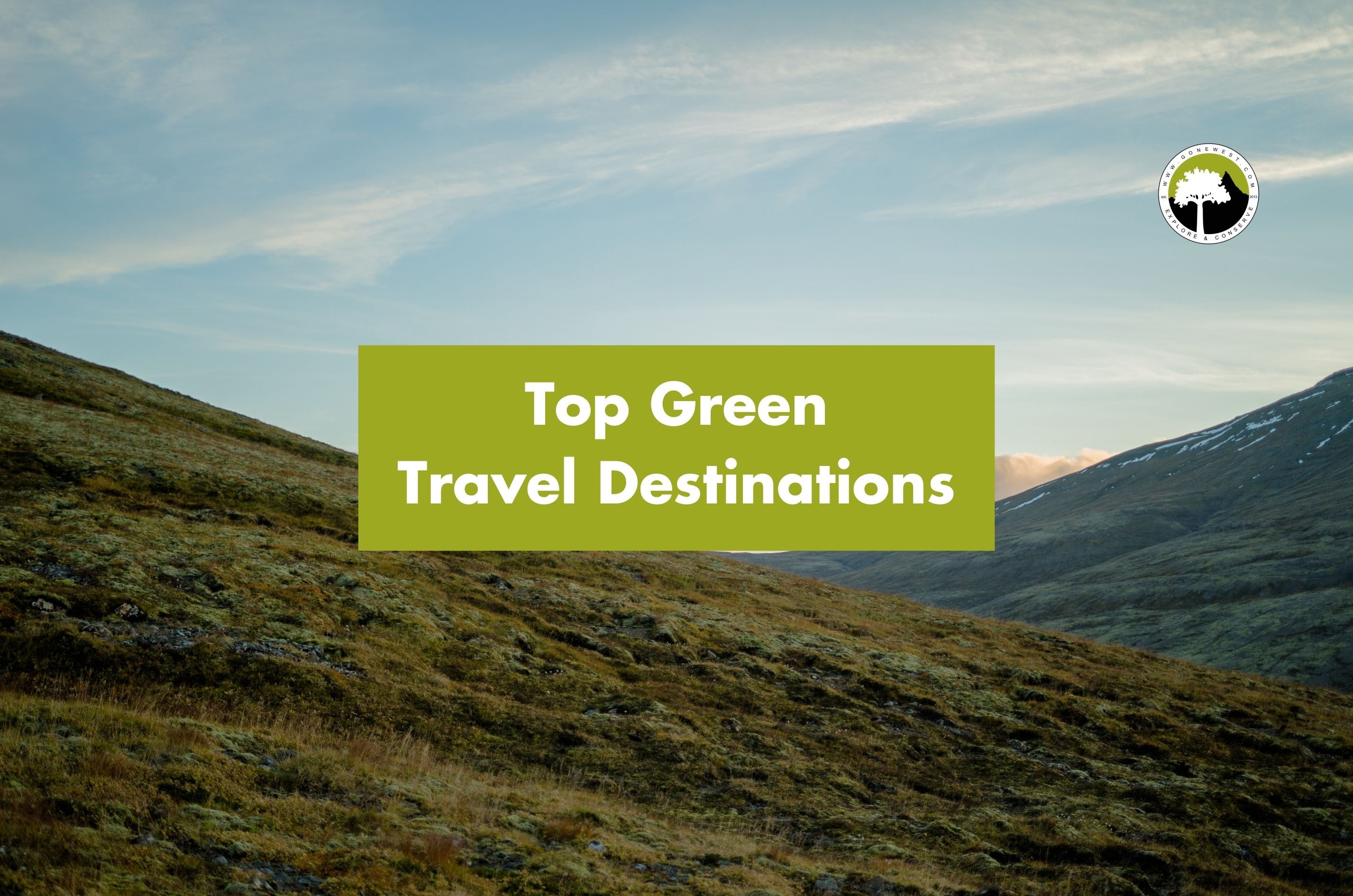We’re living in a world that needs our help to survive. Our habits are unsustainable and they are damaging our planet, but we know that.
The climate crisis has opened our eyes and we know that there won’t be a world to live in if we don’t make a change. We must live alongside nature instead of exploiting it, and we need to change how we live and what we consume.
Luckily, there has been a significant rise in eco-living and investing in sustainable homes that will last that won’t negatively impact the earth. Eco-living is particularly popular with the younger generations because it is fulfilling and significantly cheaper. The housing market is dominated by landlords, and the houses that are privately owned cost way too much money due to the scarcity of houses sales. So, a lot of people couldn’t even afford a house even if they wanted to!
It also creates a sense of freedom. Many of the sustainable housing options are portable, meaning that you can travel the world in your home!
“But what are the options and which is the best for me?” you may be asking. Well, this article will tell you just that!
What is eco-living and what are eco homes?
So first off, what even is eco-living? Essentially, it can be summed up by the statement ‘it protects the planet, supports other species and assures the future of human life’. An eco-house is defined as a home that has a minimal impact on the environment (through construction, materials and carbon footprint).
Basically, it’s being as kind to the planet as possible, making sustainable life swaps and, at the highest level, living in a green house.
Why more people are moving into eco-homes
The eco-house market is booming, from people moving into tiny homes to those converting vans. But what’s so special about these homes?
1. They are good for the planet
Obviously, they are fantastic for the planet. Most are built from sustainably sourced materials and generate their own energy from natural, renewable sources, like solar and wind.
2. They are self-sufficient
Because they are designed to use solar panels and other forms of renewable energy generation, they are pretty much self-sufficient. This means that you wouldn’t have to get energy from the grid, and you could collect greywater to use for washing machines, toilets and gardening, and rainwater for bathing, sinks and sometimes even drinking.
3. They are cheaper
Alongside being self-sufficient and sustainable, eco-homes have the benefit of being relatively cheap. Many councils will actually help pay for houses that are eco-friendly, and even if they don’t, some cost about an eighth the price of a regular home. Tiny houses cost about £36,000 to buy ready-made, but around £20,000 to build from scratch, whereas the average house price in the UK is £254,624. This makes them the most affordable homes in the UK. As well as that, you’ll hardly have to pay for bills, if at all! You may even make money by supplying some energy from your generators to the National Grid.
4. It’s easier to get onto the property ladder
Millennials and Gen Z are facing one of the worst housing crises known. As previously mentioned, the average house price in the UK is around £250’000, making it almost impossible to get onto the property ladder. If house prices increased at the same rate as average weekly wage, a house would only cost £64,425. But now, because houses are so disportionaly expensive, our generation can’t afford to buy, so we are spending our wages on rent instead.
This is why eco-homes are great. Because they are so cheap, they are much easier to buy outright, meaning Millennials and Gen-Z alike can get onto the property ladder in an affordable and responsible way.
5. They are low maintenance
To build an eco-friendly home, it must be sustainable in every sense of the word. This means they are built to last. The materials used in building these homes are generally more durable anyway, so less things will break due to weather or use.
6. It is a healthier environment to live in
A lot of man-made products used in the construction of houses contain lots of unnatural chemicals that can be harmful to humans (even on a small scale). But, because eco-houses are made out of sustainable, natural materials, they are much kinder to us. As well as that, the green energy used to power the house doesn’t release any potentially harmful compounds, like carbon monoxide from ovens, so it is much safer to live in.
7. Some homes are portable
As explained later in this article, some eco-homes are portable too. Tiny homes and vehicle conversions are a great example of this. They are great for people who don’t want to be tied down, or just simply love to travel, which is why they are so popular nowadays.
8. They are an investment into our future
Buying an eco-house is one of the ways to have the biggest positive impact on the environment in our lives. Households around the globe make up 24% of the total greenhouse gas emissions. Even though that’s a relatively small percentage in comparison to transport and industry, it’s the area we can make the most individual difference.
This impact is a great way to actually help our future become a little greener, a great way to invest in your future, and helps combat climate change.
Another great way to invest in your future is to invest in Gone West with Seedrs. Visit this page for more information.
Below, we have listed a few examples of eco-friendly houses that are popular and great for the planet. We’ve told you what they are, why they are good, and some limitations that they have.
Tiny Houses
Credit: Fair Housing For Frome
The first eco-house on our list is possibly the most popular; tiny houses. They came about when Jay Shafer built a house that was just 10mx10m because it was a more affordable option than mainstream housing. Since then, their gain in popularity has been exponential, with the greatest increase around the release of Tiny House Nation on Netflix.
But, what is a Tiny House?
Well, a tiny house is defined as a house that ranges from 100 to 400 square feet. This is less than a sixth of the size of an average sized house! The Tiny House Movement is an architectural and social movement that advocates for downsizing living spaces, simplifying, and living with less.
Why are they popular?
As previously mentioned, tiny houses are incredibly cheap compared to normal houses. They are an eighth of the price and would potentially only take a few years to save up for (even less if you bought it on a loan). As well as that, they are eco-friendly and portable. Most tiny houses have built in solar panels and greywater units to make them self-sufficient and portable. This gives them the added benefit of being sustainable too.
They’re portable!
Because tiny houses are generally custom made in a workshop, they have to be transportable to be sold. Many of them have built in wheels or are easily carried on trailers and trucks. You could even hitch it to the back of your car/van! This makes it a great investment if you want to travel cheaply and comfortably.
Downsides of living in a Tiny House
But, like everything else, tiny houses have limitations too. We want to paint the whole picture and show the downsides that come with owning/living in a tiny home.
- If you’re someone with a lot of stuff or tend to be a little bit messier, you may find it difficult to adjust to the tiny house lifestyle. It also might be a struggle if you have a big family or a lot of pets because of the lack of space.
- You also have to rent/buy land for your tiny house to stay at because it is illegal to park it without permission (much like campervans). This can be difficult to find and may even be quite pricey depending on where you want to pitch it.
- It’s quite hard to buy food and household items in bulk because of the lack of space. So, depending on where you shop, it may mean buying more products with unsustainable packaging.
- As well as buying in bulk, you can’t really meal prep either because of the same issue.
These cons may be a deal breaker for you, but if they’re not, or you’re simply just unsure, know that it is an incredibly rewarding investment, environmentally and personally.
Where to buy
If you’re still interested in purchasing a tiny house and you’re wondering where to buy them, look no further. Of course, you can build one yourself so much cheaper, and here’s how. But, if you’d rather buy a ready-made one, there are many sites and private places that sell them, some are even on Rightmove.
Credit: LG Lesmo
When furnishing your newly bought tiny house, you need to think smart about the amount of space you take up. Luckily for you, Gone West has partnered with LG Lesmo, a small transformable furniture company. They have extendable tables, space-saving chairs, and other unique transformable furnishings. Because they have partners with us, they are also doing their bit for the planet. For every table sold, they plant a tree with us. So get buying!
Interested in offsetting your business with Gone West? Visit our Offset Your Business page on our website for more information.
EarthShips
Credit: Eric Draper/AP Photo
From one futuristic house to another. EarthShips are truly an amazing spectacle and are incredible for the planet. They aren’t as available as tiny houses, but if you can get your hands on one, you won’t regret it!
What is an EarthShip?
They are a type of passive solar earth shelter that is made up of natural and upcycled materials such as earth-packed tyres. The concept was created by an architect named Michael Reynolds.
Where to find them
EarthShips are probably the trickiest type of sustainable home to come-by. They are more common in other countries, such as America, but the UK only has a few, and even those aren’t private homes.
Not all is lost though! One of the EarthShip locations in the UK gives workshops on how to build your own. Low Carbon Trust in Brighton gives you the opportunity to workshop ideas, try out building parts of an EarthShip, and help you to get through the next steps.
How to build
You can find many resources on the internet on how to build an EarthShip, such as e-books or webpages, or take part in the workshop mentioned above.
Once you know how to build an EarthShip, you need to know where to build it. Many councils are happy to give planning permission for sustainable builds and will even help fund/plan/build it in some cases. So, all you need to do is find some suitable land. There are a few options that you can choose from with land; land that is ready to build on, derelict buildings, and brownfield sites.
The most expensive of the three is obviously the land that is ready to go, but is a good option if you’ve got money to spare and have a tighter schedule. Derelict buildings are also a great choice if you have a little bit less time because most already have planning permission and are generally sold off pretty cheaply.
The third option, brownfield sites, is a little more complicated but could be worth it if you have a lower budget. Brownfield sites are generally derelict buildings or factories that are sometimes contaminated with pollutants or waste from the building that was previously there. Don’t worry, they are safe to live on, and if they won’t your application wouldn’t be accepted. They are sold at a very low price to sustainable projects because councils want the sites to be cleared and used to help the planet.
Benefits of living in an EarthShip
- They are fantastic for the planet. They are completely sustainable, self-sufficient, and are made out of recycled materials.
- Once they’re built, they cost barely anything to run. All of the energy is generated by the building and they have built-in water collectors, so you don’t have to pay for water either.
- They are still cheaper than a normal house. Most EarthShips cost around £80’000 to build, which is a third of the price of the average house in the UK. Especially if you can get funding or labour from the council.
- They are the most spacious eco-home. Many of them are around three bedrooms and have space to grow food indoors.
- They are incredibly durable. The ‘bricks’ are made out of tyres filled with earth, so they are pretty much indestructible, which is a great defense against extreme weather.
Cons of living in an EarthShip
- They aren’t readily available. You will most likely have to build it yourself, so if you don’t have the time or the passion to build it, it’s probably not for you
- They can cost quite a bit. Depending on what land you buy, it may cost the same to buy a normal house.
- Getting planning permission may take a while. You will likely have to fill in lots of paperwork for the application to be accepted, so it’s not great for those who don’t like filling in forms!
Though it might be a bit difficult to start with, living in an EarthShip is probably the most rewarding on this list. You don’t have to compromise on space and you can be entirely self-sufficient, whilst knowing that you’re giving back to the planet.
Container house
Credit: Visit Victoria
Similar to tiny houses, shipping containers are gaining interest in society. They are a different form of minimalistic living and offer a lot of the eco-friendly percs that tiny houses have. To make container homes, you simply recycle as many shipping containers as you need and furnish them. Luckily, shipping containers have strong walls, so you don’t have to build the outside of your home. They offer a great, affordable alternative to regular housing and are even being used to combat homelessness.
Pros of container homes
- They are affordable. Buying already converted container homes will cost you around £80’000. That includes everything from furnishings to land. To make one yourself, you can do it for even less! An average shipping container costs between £1000 to £3000, all you have to do is convert them and find land to build it on.
- They are a great investment for first-time buyers and also great for people who want to build their own home without much experience.
- They reduce waste. Shipping containers would generally be disposed of, so buying them and making them into homes is a great way to reduce waste.
- Buying a shipping container home reduces the demand for unsustainable materials like brick and cement, which, in turn, reduces greenhouse gases.
- It’s customisable. You can make it into any shape or size you want.
- Because it is customisable, you can add eco-friendly features onto the container. You can create a water collection system, install a composting toilet, use greywater systems and install solar panels.
Cons of container homes
- They can get really hot or really cold depending on the outside temperature because steel is a fantastic conductor. You might have to fit good insulation and ventilation in order to live comfortably.
- Most shipping containers are coated in chemicals, so you would have to remove them before moving in, otherwise your health could suffer.
- Some shipping container home conversions are wasteful, so they might actually do more harm than good, depending on where you purchased them.
Credit: LOFT
Whether you decide to move into one of these eco-friendly homes, or stay where you are, LOFT is a perfect investment for any home. LOFT is an interior design company that designs and furnishes apartments and homes. They put the people and the planet first.
LOFT has partnered with us to make your home as eco-friendly as possible. With every apartment they furnish, they plant a tree. They have also organised two tree planting sessions with their co-workers and employees to help develop their work relationships whilst helping the planet.
If you’re interested in organising a tree-planting event for your business, contact us. To find our details, visit our Contact us page.
That’s all for now. We hope you have enjoyed reading our article! We hope we have inspired you to live sustainably, whether that involves moving to an eco-home or just changing your lifestyle.
Join the sustainable revolution by following us on Instagram and by subscribing to our monthly newsletter for updates.
Stay in the loop
Subscribe to our newsletter.
Everyone loves to get away, especially after two long years of a global pandemic. From city breaks to countryside getaways, we’re all itching to get out and about and [...]
June 23, 2022
Zero-waste living has been on the rise for quite a fews years. The movement started gaining traction when the public were made more aware of the severity of the [...]
May 15, 2022
As the world is getting back to normal and we’re beginning to travel more freely without restrictions, it’s a good time to start thinking more eco-consciously when planning your [...]
April 30, 2022
We’re sure that you, like us and many other people, are entirely burned out by bad news. Whether it’s bad news about politics, the economy, or the environment, we’ve [...]
April 14, 2022
We’re a few weeks into the Winter Olympics, with people from all over the world participating, attending, and tuning in. The event is all about celebrating people and their [...]
February 17, 2022

